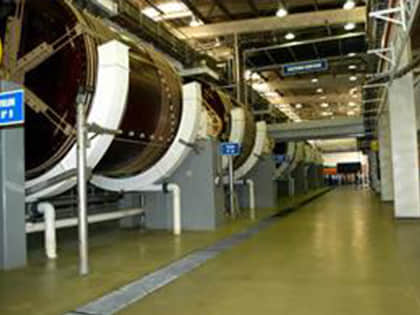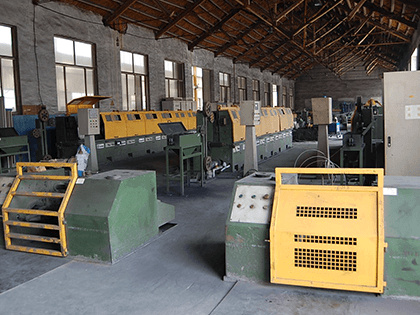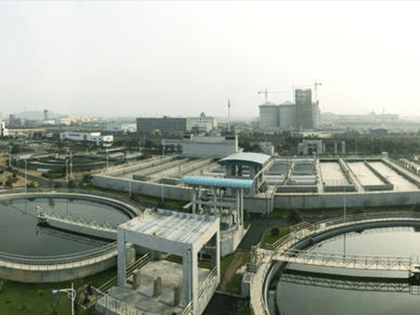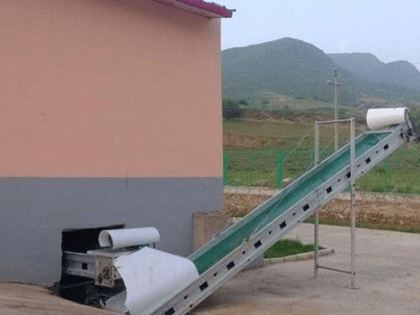Comparison Between Different Sludge Disposal Methods
Author: Taida machine Release time:2016-10-20
Reading guidance:Generally speaking, there are three common methods contained in sludge disposal, such as landfill, composting and dehydration. Each methods holds disadvantages and advantages. In order to achieve reduc
Generally speaking, there are three common methods contained in sludge disposal, such as landfill, composting and dehydration. Each methods holds disadvantages and advantages. In order to achieve reduction, stabilization and harmlessness, majority of western countries adopt incineration technology. Here is the specific introduction.
Sludge disposal and sewage disposal are two main problems in municipal water pollution. These two problems connect with each other closely. Municipal sewage disposal plants produce large amount of active sludge in the process of purifying sewage. Many chemical and medicine-making industries also produce waste sludge which is characterized by high moisture content, instability, putrescibility and foul smell. Without proper disposal, sludge will bring secondary pollution to water and atmosphere, even will cause severe threaten to ecological environment. As a result, we must adopt effective and mature technology to dispose sludge professionally.
Common disposal methods
At present, there are four common disposal methods:
Landfill
It is easy to operate and costs less investment. After digestion, there are less organic matters in sludge. Therefore, after landfill, sludge is pretty stable and covers less area. Landfill after dehydration becomes a kind of economic sludge disposal methods. In terms of development situation at home, this kind of method will exist for a long time.
However, the moisture content of dehydrated sludge is 30% higher than normal domestic wastes. Sludge has to be re-disposed before being sent to landfill. Or you can set special landfill land according to sludge moisture content and physicochemical property. At the same time, special sludge landfill will covers much land. It is difficult to choose a proper place to carry out landfill. In addition, it may cause effect on water quality and other dangerous hidden risk. Once sludge is disposed inappropriately, secondary pollution will be brought about.
Composting
It was a main way to make use of sludge. Actually, it takes advantage of aerobic microbial to decompose many kinds of organic matters which will be transferred into humus which is easily to be absorbed. Bio-energy gets utilized and energy is saved.
However, in recent years, people pays more and more attention to green food and soil pollution. The standard for sludge composting is more and more harsh. The disadvantages of composting makes it difficult to compare with chemical fertilizer. What’s more, considering additive pollution, composting methods are applied less and less.
Dehydration
It takes advantage of heat to damage gel structure of sludge and sterilize sludge. The temperature can reach to over 95 degree centigrade. Besides effective sterilization, it can reduce sludge volume and eliminate odor.
There are many disadvantages of this method. It holds high energy consumption, complex equipment, high investment, high running cost and incomplete reduction. It also has to adopt deodorization and condensation for evaporated matters.
Incineration
It is a kind of technology which uses high temperature. It takes advantage of high temperature oxidation combustion reaction. Under condition of excess air, organic matters of sludge is oxidized and decomposed under 850 to 1100 degree centigrade.
This method holds many advantages such as less covered floor, fast disposal, large handling capacity and obvious reduction effect. The reduction can reach over 90%. After incineration, the slag can be used directly and or enter landfill after the usage of heavy metal chelation agent. It can be also used as building materials. This method can realize reduction, stabilization and harmlessness uttermost. It is the best disposal method which is widely adopted by western countries.
With the development of economy and environmental protection awareness, sludge disposal will become another emerging industry. Sludge incineration technology is not mature at home. At the same time, this industry needs the support and cooperation of government, enterprises, social groups and relevant policies.
The moisture content is a major factor which constrains running cost of sludge disposal. As a result, pretreatment is necessary to reduce moisture content.
Incineration will cause acid gas, slag, fly ash and other pollutants. Some subsequent processing should be carry out in order to control emission.
According to different content of heavy metal, following disposal method can be carried out: landfill or made into bricks; landfill after adding heavy metal chelating agent.
Brief introduction of fluid bed incineration process
Sludge incineration system is composed of following units: sludge conveying system, pretreat system, fluid bed incineration system, waste heat steam boiler, flue gas steam boiler, ash collecting system and collecting system.
Sludge conveying system: realize transfer operation;
Sludge from sewage treatment plants holds high moisture content and presents liquid state. Generally, screw rod which can achieve stepless regulation will send sludge to centrifuge for dehydration. For cakes after dehydration, the state of sludge is paste. The work is operated by conveyor. Generally speaking, conveyors can be divided into two types, shaftless conveyor and belt conveyor.
Sludge pretreatment system: reduce moisture content of sludge
Moisture content is the key factor which constrains sludge disposal cost. In terms of incineration methods, higher the moisture content is, lower the thermal value is. Accordingly, energy consumption and running cost is higher. The common sludge dehydration methods consist of belt press machine, frame press dehydration and centrifuge dehydration.
After mechanical dehydration, moisture content can be reduced to 80% to 85%. Then, sludge can be sent to fluid bed for incineration directly.
Fluid bed incineration furnace: key equipment for high temperature incineration oxidization disposal
First-class incineration furnace for sludge consist of bubbing fluid bed incineration furnace, cycle fluid bed incineration furnace and rotary incineration furnace.
In the early stage, the front burner will heat silica in front fluid bed and furnace to certain temperature (850 to 870 degree centigrade). Then, specially-designed feed device will evenly send sludge to fluid bed.
The lower part of fluid bed is composed of multiple air bellow which consists of many nozzles. Air will pass through nozzle and enter incineration furnace. Under certain amount of air, silica and sludge will be evenly fluidized. On one hand, it creates condition for uniform heat; on the other hand, sludge will be broken up by large amount of high-temperature inertia bed materials. Thus, bed sand will not bond.
There is a secondary combustion area in the middle part of fluid bed. The introduction of secondary air will form fractional combustion. Enough combustion area can guarantee enough staying time for flue gas and fly ash particles. Full combustion can be fulfilled. The introduction of secondary air adopts torus decoration. Proper proportion is better for combustion effect of furnace. It is also better for generation and emission of NOX.
At the same time, fluid bed can adjust bed materials and furnace slag according to real work situation and condition. Thus, the consistence of system can be achieved.
If sludge is called dangerous wastes, secondary combustion chamber should be set in order to guarantee staying time of flue gas under 1100 degree centigrade condition.
Residual heat steam boiler:Recycle thermal energy produced by incineration
Recycle waste heat and produce saturated vapor by taking advantage of waste heat boiler. Non-standard boiler designed by Taida can adapt to various products from sludge incineration. Waste heat boiler adopts vertical flue pipe. Hot flue gas will flow by different flue pipes sequentially. All flue pipes adopt film-type water cooling wall. Water in cooling wall will become wet steam after absorbing waste heat. After the separation of steam and water, saturated dry steam will be formed and enters steam pipe network.
Flue gas disposal system: can effectively dispose incinerated flue gas in order to achieve emission standard.
The whole set flue gas system is composed of cooling, desulfurization, dust collection and other relevant units. According to relative control plan, local regulation standards can be met by controlling some harmful matters, such as nitric oxide, sulphide, acid matters, heavy matters, dust and dioxin.
Advantages of Longsha project
This project can provide whole set of solution about sludge incineration technology. The project consists of basic research, process design, management and construction.
This project is dedicated to achieving localization building on the basis of western advanced technology. It can meet customers’ demands with reasonable cost and superior quality.
With existing process and rich production experience, this project has finished many important projects. It also cooperates with some advanced European enterprises on environmental technologies and reaches concession agreements.
With strong process design and technology, Longsha project establishes cooperation relationship with first-class companies in this industry. There are many familiar project for viewing and emulation in foreign countries especially in Europe.
Its domestic cooperation partner, Taihu boiler holds strong domestication design and manufacture ability, which offers guarantee for reducing system investment.
Conclusion
Fluid bed incineration is a pretty better solution. With strong turbulence, long air staying time and even temperature distribution, it can incinerate effectively under low temperature and less air. It also can effectively eliminate harmful matters. High effective rate for removal agent used for harmful matters is pretty high. Through fractional combustion, the production of NOX can be greatly controlled. By adding alkaline substances and lime stone, the acid gas content can be greatly reduced. By recycling waste heat in incinerated flue gas, the adding amount of auxiliary fuels can be reduced. In this way, the cost of sludge disposal can be reduced to the lowest level.
Sludge disposal and sewage disposal are two main problems in municipal water pollution. These two problems connect with each other closely. Municipal sewage disposal plants produce large amount of active sludge in the process of purifying sewage. Many chemical and medicine-making industries also produce waste sludge which is characterized by high moisture content, instability, putrescibility and foul smell. Without proper disposal, sludge will bring secondary pollution to water and atmosphere, even will cause severe threaten to ecological environment. As a result, we must adopt effective and mature technology to dispose sludge professionally.
Common disposal methods
At present, there are four common disposal methods:
Landfill
It is easy to operate and costs less investment. After digestion, there are less organic matters in sludge. Therefore, after landfill, sludge is pretty stable and covers less area. Landfill after dehydration becomes a kind of economic sludge disposal methods. In terms of development situation at home, this kind of method will exist for a long time.
However, the moisture content of dehydrated sludge is 30% higher than normal domestic wastes. Sludge has to be re-disposed before being sent to landfill. Or you can set special landfill land according to sludge moisture content and physicochemical property. At the same time, special sludge landfill will covers much land. It is difficult to choose a proper place to carry out landfill. In addition, it may cause effect on water quality and other dangerous hidden risk. Once sludge is disposed inappropriately, secondary pollution will be brought about.
Composting
It was a main way to make use of sludge. Actually, it takes advantage of aerobic microbial to decompose many kinds of organic matters which will be transferred into humus which is easily to be absorbed. Bio-energy gets utilized and energy is saved.
However, in recent years, people pays more and more attention to green food and soil pollution. The standard for sludge composting is more and more harsh. The disadvantages of composting makes it difficult to compare with chemical fertilizer. What’s more, considering additive pollution, composting methods are applied less and less.
Dehydration
It takes advantage of heat to damage gel structure of sludge and sterilize sludge. The temperature can reach to over 95 degree centigrade. Besides effective sterilization, it can reduce sludge volume and eliminate odor.
There are many disadvantages of this method. It holds high energy consumption, complex equipment, high investment, high running cost and incomplete reduction. It also has to adopt deodorization and condensation for evaporated matters.
Incineration
It is a kind of technology which uses high temperature. It takes advantage of high temperature oxidation combustion reaction. Under condition of excess air, organic matters of sludge is oxidized and decomposed under 850 to 1100 degree centigrade.
This method holds many advantages such as less covered floor, fast disposal, large handling capacity and obvious reduction effect. The reduction can reach over 90%. After incineration, the slag can be used directly and or enter landfill after the usage of heavy metal chelation agent. It can be also used as building materials. This method can realize reduction, stabilization and harmlessness uttermost. It is the best disposal method which is widely adopted by western countries.
With the development of economy and environmental protection awareness, sludge disposal will become another emerging industry. Sludge incineration technology is not mature at home. At the same time, this industry needs the support and cooperation of government, enterprises, social groups and relevant policies.
The moisture content is a major factor which constrains running cost of sludge disposal. As a result, pretreatment is necessary to reduce moisture content.
Incineration will cause acid gas, slag, fly ash and other pollutants. Some subsequent processing should be carry out in order to control emission.
According to different content of heavy metal, following disposal method can be carried out: landfill or made into bricks; landfill after adding heavy metal chelating agent.
Brief introduction of fluid bed incineration process
Sludge incineration system is composed of following units: sludge conveying system, pretreat system, fluid bed incineration system, waste heat steam boiler, flue gas steam boiler, ash collecting system and collecting system.
Sludge conveying system: realize transfer operation;
Sludge from sewage treatment plants holds high moisture content and presents liquid state. Generally, screw rod which can achieve stepless regulation will send sludge to centrifuge for dehydration. For cakes after dehydration, the state of sludge is paste. The work is operated by conveyor. Generally speaking, conveyors can be divided into two types, shaftless conveyor and belt conveyor.
Sludge pretreatment system: reduce moisture content of sludge
Moisture content is the key factor which constrains sludge disposal cost. In terms of incineration methods, higher the moisture content is, lower the thermal value is. Accordingly, energy consumption and running cost is higher. The common sludge dehydration methods consist of belt press machine, frame press dehydration and centrifuge dehydration.
After mechanical dehydration, moisture content can be reduced to 80% to 85%. Then, sludge can be sent to fluid bed for incineration directly.
Fluid bed incineration furnace: key equipment for high temperature incineration oxidization disposal
First-class incineration furnace for sludge consist of bubbing fluid bed incineration furnace, cycle fluid bed incineration furnace and rotary incineration furnace.
In the early stage, the front burner will heat silica in front fluid bed and furnace to certain temperature (850 to 870 degree centigrade). Then, specially-designed feed device will evenly send sludge to fluid bed.
The lower part of fluid bed is composed of multiple air bellow which consists of many nozzles. Air will pass through nozzle and enter incineration furnace. Under certain amount of air, silica and sludge will be evenly fluidized. On one hand, it creates condition for uniform heat; on the other hand, sludge will be broken up by large amount of high-temperature inertia bed materials. Thus, bed sand will not bond.
There is a secondary combustion area in the middle part of fluid bed. The introduction of secondary air will form fractional combustion. Enough combustion area can guarantee enough staying time for flue gas and fly ash particles. Full combustion can be fulfilled. The introduction of secondary air adopts torus decoration. Proper proportion is better for combustion effect of furnace. It is also better for generation and emission of NOX.
At the same time, fluid bed can adjust bed materials and furnace slag according to real work situation and condition. Thus, the consistence of system can be achieved.
If sludge is called dangerous wastes, secondary combustion chamber should be set in order to guarantee staying time of flue gas under 1100 degree centigrade condition.
Residual heat steam boiler:Recycle thermal energy produced by incineration
Recycle waste heat and produce saturated vapor by taking advantage of waste heat boiler. Non-standard boiler designed by Taida can adapt to various products from sludge incineration. Waste heat boiler adopts vertical flue pipe. Hot flue gas will flow by different flue pipes sequentially. All flue pipes adopt film-type water cooling wall. Water in cooling wall will become wet steam after absorbing waste heat. After the separation of steam and water, saturated dry steam will be formed and enters steam pipe network.
Flue gas disposal system: can effectively dispose incinerated flue gas in order to achieve emission standard.
The whole set flue gas system is composed of cooling, desulfurization, dust collection and other relevant units. According to relative control plan, local regulation standards can be met by controlling some harmful matters, such as nitric oxide, sulphide, acid matters, heavy matters, dust and dioxin.
Advantages of Longsha project
This project can provide whole set of solution about sludge incineration technology. The project consists of basic research, process design, management and construction.
This project is dedicated to achieving localization building on the basis of western advanced technology. It can meet customers’ demands with reasonable cost and superior quality.
With existing process and rich production experience, this project has finished many important projects. It also cooperates with some advanced European enterprises on environmental technologies and reaches concession agreements.
With strong process design and technology, Longsha project establishes cooperation relationship with first-class companies in this industry. There are many familiar project for viewing and emulation in foreign countries especially in Europe.
Its domestic cooperation partner, Taihu boiler holds strong domestication design and manufacture ability, which offers guarantee for reducing system investment.
Conclusion
Fluid bed incineration is a pretty better solution. With strong turbulence, long air staying time and even temperature distribution, it can incinerate effectively under low temperature and less air. It also can effectively eliminate harmful matters. High effective rate for removal agent used for harmful matters is pretty high. Through fractional combustion, the production of NOX can be greatly controlled. By adding alkaline substances and lime stone, the acid gas content can be greatly reduced. By recycling waste heat in incinerated flue gas, the adding amount of auxiliary fuels can be reduced. In this way, the cost of sludge disposal can be reduced to the lowest level.
Relevant news
- 2016-01-12OSC-II Model Sludge Dryer Deliv
- 2016-01-1215T/Day Aerobic Dynamic Ferment
- 2016-01-12Matters Should Be Paid Attentio
- 2016-01-12Methods exploration of chemical
- 2016-01-12Analysis of circulating fluid b
Industry trends
- 2016-01-12Comparison Between Different Sl
- 2016-01-12Adding Calcium and Stable Dispo
- 2016-01-12Sludge Treatment: Methods for S
- 2016-01-12Use Dyeing Sludge As Resource
- 2016-01-12Current situation of sludge dis
Hot spots
Hot-sale products

- Leather Industry Sludge Drying
Production Capacity:1-2200t/h

- Welding Plating Sludge Drying S
Production Capacity:1-2200t/h

- Municipal Sludge Drying Solutio
Production Capacity:1-2200t/h

- Manure Sludge Drying Solution
Production Capacity:1-2200t/h
 中文
中文 English
English Home
Home
